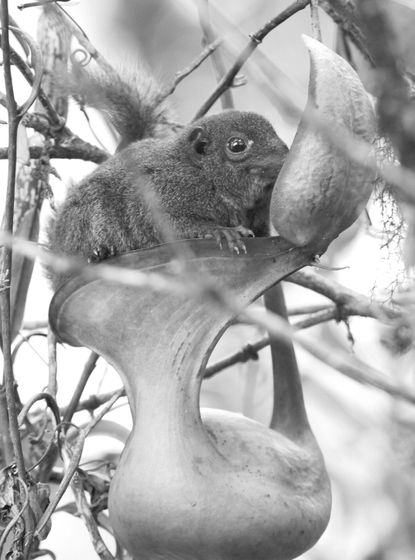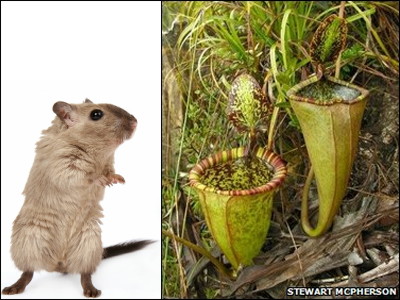A kind of carnivorous plant Nepenthes has evolved into a ``living toilet bowl'' that eats animal poo instead of insects

by
Carnivorous plants such as Nepenthes acquire the ability to reproduce even in soils lacking nutrients such as nitrogen by preying on insects. In addition, new research has shown that a type of Nepenthes, which lives in high mountains where insects are difficult to catch, effectively ingests nutrients by eating animal excrement instead of insects.
Capture of mammalian excreta by Nepenthes is an effective heterotrophic nutrition strategy | Annals of Botany | Oxford Academic
https://doi.org/10.1093/aob/mcac134
Carnivorous plants have turned to capturing mammal droppings - Scimex
https://www.scimex.org/newsfeed/carnivorous-plants-have-turned-to-capturing-mammal-droppings
Some carnivorous plants evolved to eat poop instead of bugs. And they're better off for it.
https://www.livescience.com/poop-eating-pitcher-plants-nutrients
Alastair Robinson, a botanist at the Royal Botanic Gardens in Victoria, Australia, embarked on this research because a small animal called Tupi, which lives on the island of Borneo in Malaysia, is a trap possessed by Nepenthes lowii, a type of nepenthes . It all started with a 2009 study that found that people urinate frequently.
Subsequent observations revealed that this species of Nepenthes feeds not only on tree shrubs, but also on the feces of animals such as birds, mice, and bats. No comparison has been made as to whether there is only a difference.
Therefore, Robinson and his colleagues collected tissue samples from a total of 10 species, 6 species of Nepenthes and 4 species of their hybrids that are known to live in the high mountains of Borneo and eat animal excreta, and placed them in low areas. We compared it with carnivorous plants, which are closely related species, and with ordinary plants.

by Alastair Robinson
As a result, it was confirmed that the concentration of the radioactive isotope of nitrogen, '
In a statement, Robinson said, ``Some species of Nepenthes have evolved from being carnivorous to eating animal droppings. It was found that the amount of nitrogen captured was more than double that of Nepenthes.In tropical mountains with altitudes over 2200 meters, there are few insects that feed on them, so they have a nutritional value similar to animal droppings. By collecting high nitrogen sources, we are maximizing nutritional returns.'
Nepenthes, a common carnivorous plant, lure insects with their sweet nectar scent and drop them into traps with smooth linings to digest them. Nepenthes, which eat animal excrement, also lure small animals with their sweet nectar, but they actually eat the nectar instead of tricking them. However, it takes time to eat the nectar, so the animal has to sit astride the trap for a long time, and as a result, it gives dung in return for the nectar.

by Clarke et al.2009
The research team noted that nepenthes living at higher altitudes may have to eat more selective and resourceful diets to get the nutrients they need.
Related Posts:







